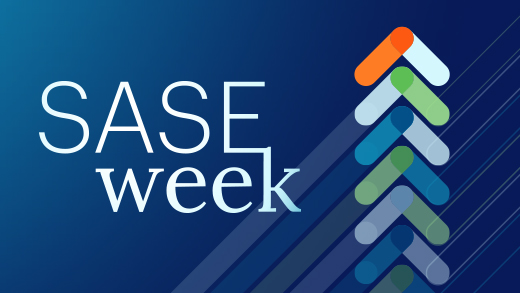Healthcare organizations still seem to think that blocking all access to unapproved cloud storage or cloud collaboration tools means that they’re preventing leakage of sensitive information. But as the old saying goes, “Data flows like water.” Eventually, it’s going to find the holes and escape.
Even if a healthcare IT system has water-tight data controls, that’s not the only goal within the organization—and not even the most important one. When blocking prevents a clinician from doing their job to the best of their abilities, data is especially hard to contain.
The need for more, and better, collaboration in healthcare
Today, a lot of health organizations are working to become more collaborative across doctors and teams to improve the quality of care and improve outcomes for patients. If I were a patient undergoing treatment, I would want to make sure that my primary care physician, my specialists, and all the different services and facilities involved across the medical treatment ecosystem would have access to all the necessary information to help resolve my illness. In fact, that’s one of the main transformative benefits that digital tools have brought to medicine in recent years.
Patients expect that all the different care providers they need are working together to solve their health problems. But the whole idea of blocking data sharing as a default institutional policy limits the ability for healthcare providers to operate as a nimble, coordinated unit. In order to collaborate, sensitive patient data needs to be shared—across departments and oftentimes outside the institution. And this kind of sharing has historically been a problem for healthcare security. Security teams tend to block first and ask questions later.
Managing data risks shouldn’t be all or nothing
Why would we want to prevent sharing of patient information among the people who need to use it? Blocking collaboration tools or access to data sources outside the organization’s control might limit the risk of data loss, but it also sets us back in the core objective of treating patients with the best available resources.
Here’s a good example. Let’s say the only managed cloud application for collaboration at our hospital is Microsoft OneDrive. The hospital’s security team blocks access to all other services (e.g., Dropbox, Google Drive, Box) to ensure that private patient data/PII can’t be exfiltrated via those tools. But what if a doctor is collaborating with a major research university on a specialized course of treatment, and that institution only allows access via Dropbox?
So, now we have a problem. Rigid data blocking policies are hampering cross-institutional collaboration and the best treatment for a patient, whether the data in question contains sensitive information or not. Maybe it’s just communications back and forth between the hospital and the university. Shouldn’t they be automatically allowed to collaborate across different cloud platforms under benign circumstances, rather than wasting time for one side or the other to request and wait for an approved exception from IT/security?
In this case, the hospital says that clinicians can’t go to Dropbox and the university says researchers can’t go OneDrive because of overly rigid data policies. And rigid systems break—doctors who are committed to patient care will find workarounds—via Shadow IT, where data may be moving outside the institution anyway. We need to stop blocking everything for the sake of transparent, collaborative patient care. The only way we can do this is to allow providers to do the things that they need to do.
“Allow” is the new “block”
Modern healthcare organizations can start down the path of facilitating cooperative care by first gaining visibility into the data and the users who are seeking access to the cloud and collaboration tools. Once we have visibility, then we can apply granular controls around what users can and can’t do based on the content of the file and based on the action that they’re trying to make.
Back to the previous example of the hospital working with the research university. We can apply a group policy that allows our hospital clinicians to go to the university’s Dropbox account to view or download shared research findings, but the policy may block them from being able to upload anything. Or we can take it a step further and say our clinicians can also upload files—unless they contain protected health information (PHI) or personally identifiable information (PII) data. If that attempt is made, security controls would automatically block the user from being able to send out these specific files.
By establishing visibility and implementing policy-based granular controls, the organization can move forward with transparent collaboration—whereas before, the universal block policy left everyone at a standstill.
The challenge of multiple user instances
Another thing that many hospitals don’t realize is that by allowing their users to go to Office 365 or Google Workspace, those users could potentially be going to another instance of those cloud applications.
To use another common example, let’s say you’re a doctor on contract with a local hospital, but you also have your own private practice. You may come in and access your hospital-sanctioned instance of Office 365—but one day, you also need access to your private practice Office 365 instance to check on something else. By allowing users into Office 365 as a default policy, the hospital very often isn’t able to see which instance you’re actually accessing. You could be connecting to reference test results for an outside patient, or you could be uploading patient PII. The hospital may not be able to see enough to know what’s actually transpiring—let alone do anything to control it.
So how can hospitals gain visibility to discern a doctor’s private Office 365 instance from one that’s managed to use within the hospital? They need security with instance-aware visibility and granular controls. Policies can be set so that a contractor can come into the hospital, view their private instances for reference, but they can’t upload anything. Or maybe just not anything that contains sensitive or private information.
Security that enables this kind of adaptive trust is what healthcare needs to embrace in order to make flexible collaboration and appropriate information sharing possible—without introducing undue risks to patients or institutions.
The block party is over: Secure collaboration starts today
It’s important to remember, data flows like water—it will find any available gap to escape. Clinicians will find ways to bypass any security controls that appear to get in the way of their primary objective—providing patients with the best possible care and saving lives.
Security for healthcare now needs to focus on visibility and control so conversations can shift from just a standard “no” into policies that mitigate risks without inhibiting teamwork. Ten years from now, healthcare CISOs are going to look back and say, “Remember when we used to just block everything?” To serve patients and save lives, that evolution needs to start today. And fortunately, there are already security solutions for transparent visibility and granular control available to help make it possible.
This article was originally published at Healthcare IT Today




 Zurück
Zurück 























 Read the blog
Read the blog